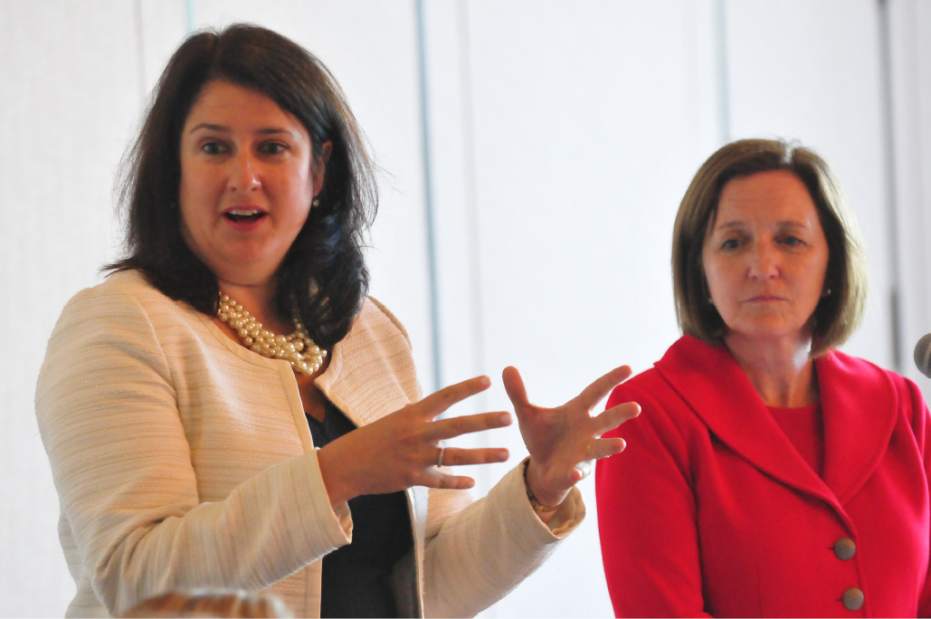By Natasha Lindstrom
The Pittsburgh Tribune-Review.
Ambitious women in the Pittsburgh region have made notable strides toward narrowing the gender gap in leadership in recent years, advocates say.
“You see the issue improving in a really tangible, strong way in this city,” said Casey Ryan, co-chair of the United Way of Allegheny County’s Women’s Leadership Council and newly named global head of legal personnel for Downtown-based law firm Reed Smith.
“In some industries, you may have faster growth on that front than others, but it’s happening across sectors.”
Forty of the area’s top 50 publicly traded companies have female board members. City and county governments have enacted legislation targeting wage parity between men and women. The nearly 2,000-member Women Leadership Council is one of the fastest-growing chapters in the nation.
Yet regionally and nationwide, female representation at the highest levels is inching upward at a dismal pace.
More women run Fortune 500 companies than ever before, but the 25 women on Fortune magazine’s 2014 list account for 5 percent of CEOs.
Nearly half of law school graduates are women, yet women make up 15 percent of equity partners and 5 percent of managing partners in law firms, according to the 2013 “Benchmarking Women’s Leadership in the United States” study by the University of Denver’s Colorado Women’s College. In education, 75 percent of teaching positions are held by women, but women make up less than one-third of leadership roles.
Across public, private and nonprofit sectors, women are over-represented in middle management and sparse at senior levels.
“It’s very disappointing,” said Leanne Meyer, program director at Carnegie Mellon University’s Leadership and Negotiation Academy for Women. “That gap persists, and it really has not improved much over time.”
At the current rate, it could take women more than four decades to achieve parity with men at senior executive levels, projects Catalyst, a New York-based organization that studies women in the workplace.
A growing body of research points to a factor advocates hope will speed things up: Organizations with more women in senior leadership demonstrate stronger performance.
“When there is a more equitable representation of women in executive leadership roles, that organization or business does much better, performs much better and is among the elites,” said Tiffani Lennon, lead researcher for the 2013 Colorado Women’s College study and author of the new book “Recognizing Women’s Leadership.”
Around the world, companies with one or more female board members have garnered 3.3 percent bigger stock market returns than those without women on boards, a Credit Suisse report found last month. The higher the share of women in top posts, the greater returns on equity.
“Boards with women on them are not just more productive, but they also have better governance practices,” said Heather Arnet, CEO of the Women and Girls Foundation of Southwest Pennsylvania. “The more diverse the people around the table, the more questioning you find and the more likely you’ll see conflict of interest and ethics policies.”
Reed Smith is among locally based companies highlighted for efforts to support women. The firm’s Women’s Initiative Network identifies challenges confronting women at each career stage. It provides support for attorneys returning from maternity leave and offers competitive business development grants. Women account for 36 percent of the law firm’s leadership positions and 22 percent of partners.
Working Mother magazine deemed Reed Smith one of “50 Best Law Firms for Women” for three straight years, firm spokeswoman Jamie Moss said.
“The bigger companies get it, and I don’t think they’re being ‘shamed’ into it at all,” said Mary Lee Gannon, a leadership coach who started StartingOverNow.com to share her path from a welfare mom to CEO of a $26 million organization. “They want to keep their women because they see the value in a diverse workforce.”














































































































































































































































































































































































